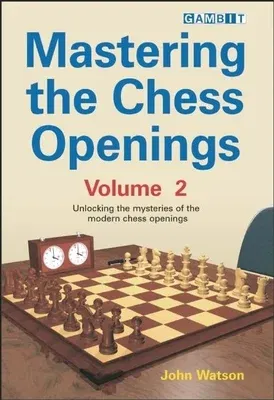For many chess-players, opening study is sheer hard work. It is
difficult to know what is important and what is not, and when specific
knowledge is vital, or when a more general understanding is sufficient.
Tragically often, once the opening is over, a player won't know what
plan to follow, or even understand why his pieces are on the squares on
which they sit.
John Watson seeks to help chess-players achieve a more holistic and
insightful view of the openings. In his previous books on chess
strategy, Secrets of Modern Chess Strategy and Chess Strategy in
Action, he explained vital concepts that characterize modern chess.
Moreover, he did so in ways that have enabled these ideas to be
understood by club players. Here he does likewise for the openings,
proceeding from the fundamental ideas that apply to all openings to more
advanced concepts that are essential for substantial improvement.
In this major four-volume work, Watson explains not only the ideas and
strategies behind specific openings, but also the interconnections of
chess openings taken as a whole. By presenting the common threads that
underlie opening play, Watson provides a permanent basis for playing
openings of any type.
This second volume focuses on queen's pawn openings, exploring such
openings as the Nimzo-Indian, King's Indian and the entire Queen's
Gambit complex, and the characteristic structures to which they lead.
International Master John Watson is one of the world's most respected
writers on chess. His groundbreaking four-volume work on the English
Opening firmly established his reputation in the 1980s, and he has
produced a string of top-quality works since. In 1999, Secrets of
Modern Chess Strategy, Watson's first book for Gambit, won the British
Chess Federation Book of the Year Award and the United States Chess
Federation Fred Cramer Award for Best Book. His former pupils include
the 1997 World Junior Champion, Tal Shaked.

